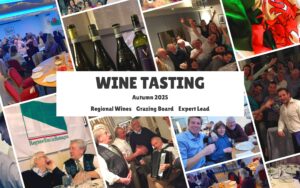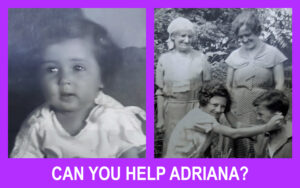The aim of “Emigranti from Valceno – England & Wales”
The aim of “Emigranti from Valceno – England & Wales” was to narrate the history and lives of a community of people who were emigrating in search of work as early on as the nineteenth century.
The people of Valceno are robust and immune to gruelling living conditions, because the lands in which they grew are extremely selective. They were lands which people left to bring their dreams to fruition: a home, a family and a stable future for their children. Today these are ordinary things, but long ago things were quite different. The struggles of living in the mountains, back-breaking work in the fields, long, harsh winters, large families to feed and no certainty of obtaining a better future drove many of our young people to try their luck elsewhere, in Wales, France, America and other places besides.
Many of our fellow countrymen made their dreams come true, bringing their plans to fruition and guaranteeing their children and grandchildren a future. It took effort, humiliation and obligation, even deportations and imprisonment in wartime camps when Italy joined forces with Nazi Germany, not to mention human tragedies inexplicably buried for years such as the sinking of the Arandora Star, but they managed. Some returned to their birthplaces whilst others chose to remain in their adoptive areas where their children were born. In the words of a hit novel written by a famous author, at the end of the day that’s how it should be; go where your heart takes you.
One late spring evening, as I listened to the enthralling tales Bruno sometimes tells of his life as an Englishman, perhaps spurred by the giddiness of a couple of beers, we had the idea of a photograph book on emigrants. As we talked about it, memories of his youth sprang to mind and images of the many people he had met passed before his eyes. One day and a few phone calls later, we met the Mayor of Bardi and we embarked on this wonderful exploit which has taken us on a tour of London, Cardiff in Wales, and the Valceno.
We needed an unusual photographer, one of those who manages to tell a person’s story even in the most banal situations, whatever it takes. Edoardo Fornaciari is a talented, somewhat eccentric artist. We got him involved. The start was somewhat uphill, full of curves and hairpin bends… we were heading towards Bardi. Our work had to start there, in Piazza Martiri d’Ungheria. We got in contact with Adriano Morini, the young President of the Association of Valceno Parmigiani in London, and Romeo Basini, President of the Association of Friends of Valceno and Wales. In late June and early July we were in London, whilst in September we were in Cardiff.
August was spent between Bardi, Tosca and Noveglia. In just a few months we met many people, women and men, some young, some less so. They all had one thing in common: pride in being Italian and from Valceno. They have kept close ties with their area of origin, and return for a short summer holiday every year.
They opened their homes to us, along with their larders, and welcomed us as friends. There was something familiar about the British homes and their furnishings. A carefully framed print of Bardi Castle was to be seen virtually everywhere: it was an icon to be proud of. Something approaching an identity card. The people of Valceno are a proud people. The photographic book we are presenting was made all in one go, with passion and enthusiasm. It is this same passion and enthusiasm that enabled many of our fellow countrymen to carve out important roles for themselves in the country hosting them. The only thing that differs is the time: for them, it lasted a lifetime. For us, it only lasted a few weeks.
Massimo Pinardi
Bruno Tanzi
The Pythian goddess Oracle at Delfi stated: “Become what you are”.
On examining the large collection of photographs diligently gathered here, a fil rouge linking each element to the next emerges. This underlying logic is as invisible yet essential as the metric structure that maintains the formal balance in opera.
The variety of individuals from varying backgrounds and areas immortalised here are all linked by the same common history of Valceno’s emigrants. Yet they are also imbued with a common artistic inspiration: there is real emotional involvement and complicity which arises from comprehension and memory.
More than the story of themselves, it is the will to tell the story of their origins which renders the poses natural, playful and simple. It conveys their belonging to a world of suffering and hardship which they have now left behind. What these people express today is a positive feeling; it is the essence of their experience, but first and foremost it is the result of a process of becoming, a generational transformation that would have been inconceivable without the sacrifices of their forebears.
Whilst the oracle places the emphasis on the essence of the origins that set one apart as a means of defining the present, a wider interpretation might take in the concept of “roots”, in terms of genealogical origin. From the time-worn faces of the elderly figures, some of whom have returned to their homelands after a lifetime spent in England or Wales, comes a profound feeling of moral understanding and sympathy.
I close with the hope that telling the story of emigration through the faces of ordinary people now integrated into the countries that received them will help diffuse a notion expressed by Scottish philosopher Adam Smith, both in our country and those that are now opening their doors to migratory flows: that “source of our sensitivity for the suffering of others” which “is the capacity to put oneself in their place, the capacity that enables us to understand what they feel and to be affected by it”.
Senator Franco Danieli
Vice Minister for Foreign Affairs
From A.V.C.
The stories of Valceno’s emigrants in Wales tell of people who left their homelands in search of better living conditions. Albeit with many sacrifices, the community of Italians from Valceno is now fully integrated into Welsh society. Our Association aims to maintain firm links between the people of Valceno and the land of our forebears. This book of photographs successfully conveys both our feelings and the mindset that defines our community abroad.
Romeo Basini
President of the Valceno Wales Association

















